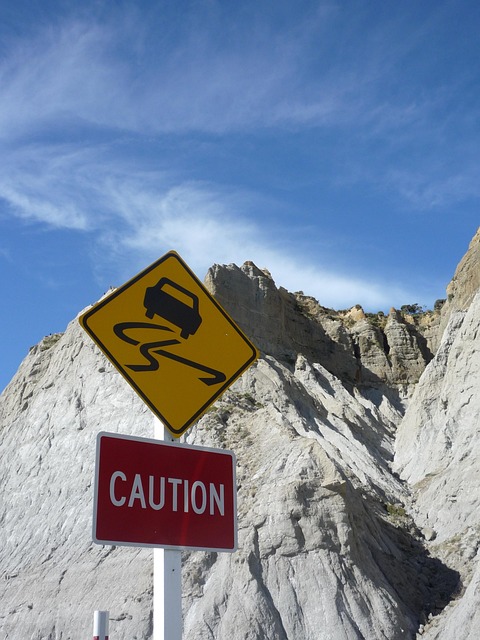Understanding common road risks is crucial for defensive driving. Staying alert, maintaining safe distances, regular vehicle maintenance, and recognizing dangerous behaviors reduce accident risk. Selecting specific Road Safety Tips like brake checks, helmet use, and proactive measures for diverse conditions enhance overall traffic harmony and secure journeys.
“Enhance your road safety with our comprehensive guide on defensive driving. In today’s fast-paced world, anticipating risks is key to a secure commute. Discover essential road safety tips including understanding common risks, actively scanning surroundings, maintaining vehicle maintenance, staying alert, and mastering defensive driving techniques. Learn how planning ahead can mitigate potential hazards, ensuring peace of mind on every journey. Implement these select road safety tips for a smarter, safer travel experience.”
- Understand Common Road Risks
- Scan Your Surroundings Actively
- Maintain Secure Vehicle Maintenance
- Stay Alert and Focused
- Practice Defensive Driving Techniques
- Plan Ahead for Safe Commutes
Understand Common Road Risks

Understanding common road risks is the first step in driving defensively and anticipating potential hazards. One of the most significant challenges drivers face is low-light visibility enhancement techniques for drivers, which can significantly reduce their ability to see clearly. Nighttime driving or navigating through areas with poor lighting conditions requires heightened awareness. Additionally, emergencies on the highway: what to do are unpredictable events that demand quick reaction times. Being prepared involves maintaining a safe following distance, regularly checking your vehicle’s maintenance, and knowing how to handle skids or sudden stops.
Another critical aspect is recognizing signs of a potentially dangerous driver ahead. This includes observing aggressive driving behaviors such as speeding, frequent lane changes without signaling, or tailgating. Drivers should also be alert for any unusual movements or signals that might indicate a driver’s distraction or impairment. By selecting road safety tips that focus on these areas, you can significantly reduce the risk of accidents and foster a safer driving environment.
Scan Your Surroundings Actively

Staying alert is key to driving defensively. Before starting your journey, take a moment to scan your surroundings actively. Be mindful of other vehicles, pedestrians, and cyclists—both during the day and night. Use all your senses; look beyond what’s immediately in front of you and check your mirrors frequently. This proactive approach can help you anticipate potential risks and react accordingly.
Implementing effective road safety tips such as maintaining your vehicle’s brakes for optimal stopping power and ensuring everyone, including adults and kids, follows proper safety guidelines—like wearing a bicycle helmet—is essential. By staying focused and being prepared, you can contribute to both pedestrian safety and overall traffic harmony on the roads.
Maintain Secure Vehicle Maintenance

Maintaining your vehicle’s security through regular maintenance is a vital road safety tip that cannot be overstated. Schedule routine checks to ensure all components, from brakes to tires, are in optimal condition. Well-maintained vehicles not only perform better but also reduce the risk of breakdowns or malfunctions on the road, enhancing your overall safety and peace of mind.
When learning defensive driving techniques online or exploring safe winter driving practices every motorist should know, remember that proper vehicle maintenance is a cornerstone. Alongside pedestrian safety guidelines for both day and night, keeping your car in top shape ensures you’re prepared for various driving conditions and reduces the likelihood of accidents.
Stay Alert and Focused

Staying alert and focused is a fundamental aspect of defensive driving. It involves being fully present on the road at all times, paying close attention to your surroundings, and anticipating potential hazards. This requires actively scanning your environment, including observing other drivers’ behaviors, checking mirrors frequently, and remaining cognizant of potential risks like vehicles merging, pedestrians crossing, or sudden stops. By maintaining intense focus, you can quickly identify and react to these situations, minimizing the chances of accidents.
Selecting effective road safety tips such as avoiding road rage triggers and solutions, particularly when navigating narrow, winding roads, is crucial for elderly drivers or anyone aiming to enhance their defensive driving skills. Additionally, considering specific safety measures for elderly driver safety can significantly reduce risks. These include maintaining a safe following distance, being extra cautious in bad weather conditions, and regularly assessing vision and hearing capabilities to ensure optimal road safety.
Practice Defensive Driving Techniques

Incorporating defensive driving techniques is a crucial part of ensuring your safety on the road. It involves being prepared for unexpected situations and anticipatory actions that minimize risks. One of the key aspects is to always be aware of your surroundings, including other vehicles, pedestrians, and potential hazards. By adhering to road safety tips like maintaining a safe following distance, signaling your intentions clearly, and adhering to speed limits, you can significantly reduce the chances of accidents.
Additionally, understanding blind spots while changing lanes or merging into traffic is essential for pedestrian safety guidelines day and night. Safe driving after consuming alcohol or drugs should never be considered an option; it impairs judgment and reaction time. Remember that defensive driving isn’t just about avoiding immediate dangers but also preparing for unforeseen events, ensuring a more secure journey for yourself and others on the road.
Plan Ahead for Safe Commutes

Planning ahead is key to ensuring safe commutes, especially when navigating challenging conditions. Motorists should familiarize themselves with road safety tips tailored for various environments. For instance, adopting safe winter driving practices every motorist should know, such as maintaining a greater following distance and using headlights appropriately, can significantly reduce risks during icy or snowy weather. Additionally, considering elderly driver safety considerations is vital, as older drivers may face unique challenges that impact their driving ability.
When venturing into busy city streets, it’s crucial to exercise extra caution. Selecting effective road safety tips like staying alert, adhering to speed limits, and using mirrors regularly can help avoid accidents in the hustle and bustle of urban environments. These proactive measures not only protect individuals but also contribute to a safer overall driving experience.
By implementing these select road safety tips, such as anticipating risks, actively scanning your surroundings, maintaining secure vehicle maintenance, staying alert, and practicing defensive driving techniques, you can significantly enhance your safety on the road. Planning ahead for safe commutes further reinforces your efforts in navigating potential hazards. Remember, being proactive and vigilant is key to avoiding accidents and ensuring a smoother, safer journey for everyone.
